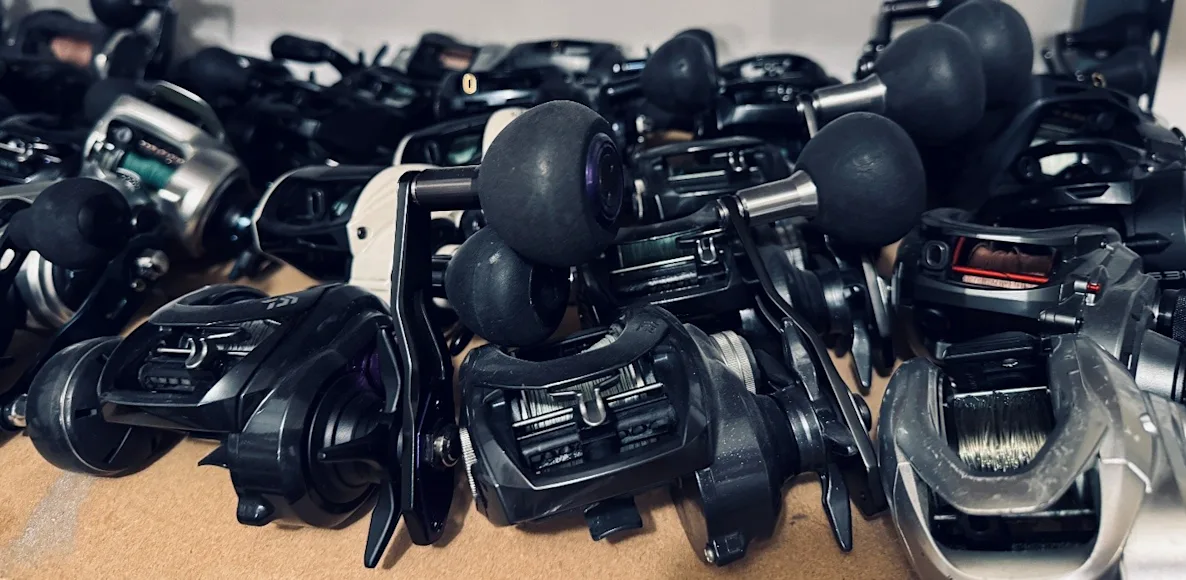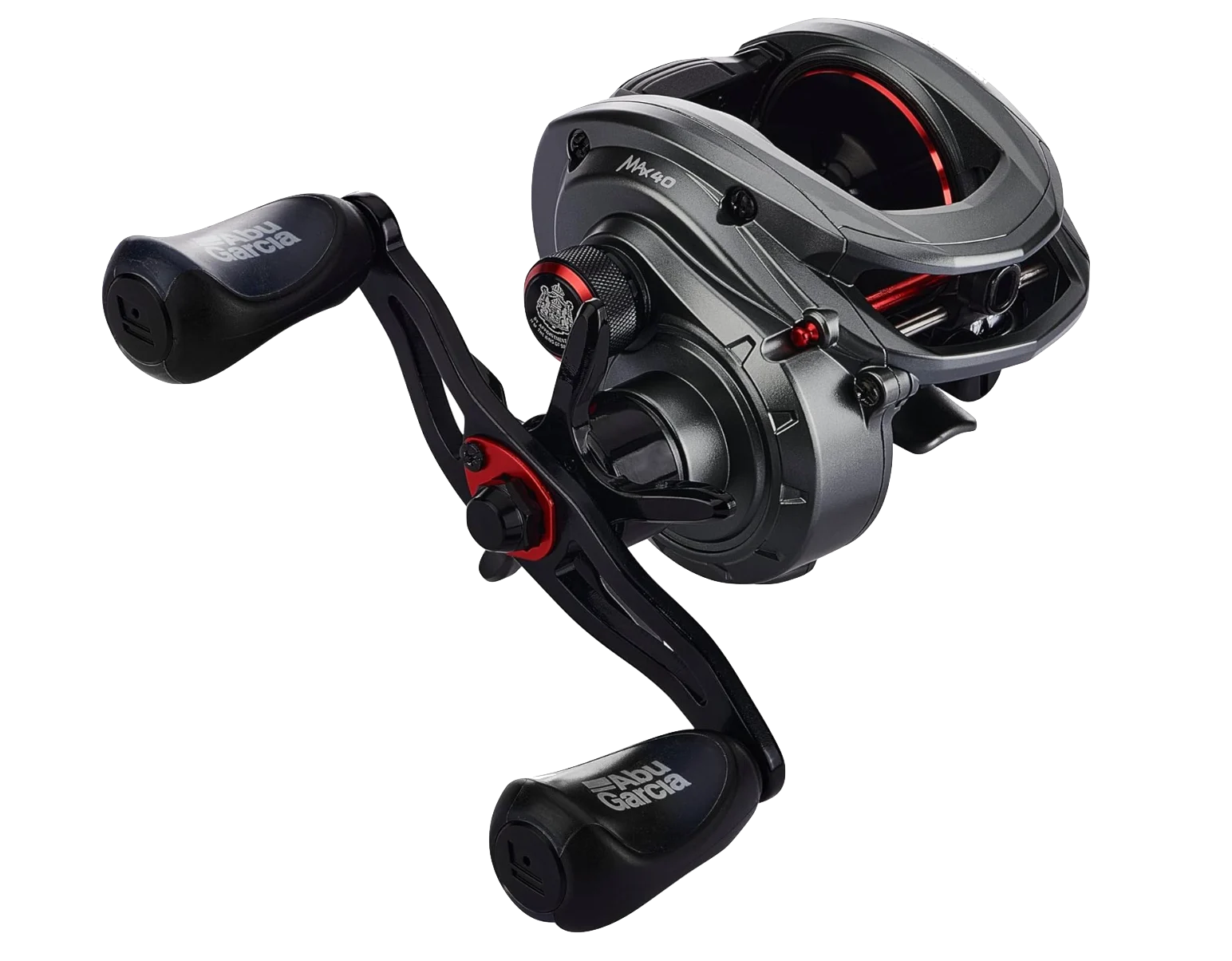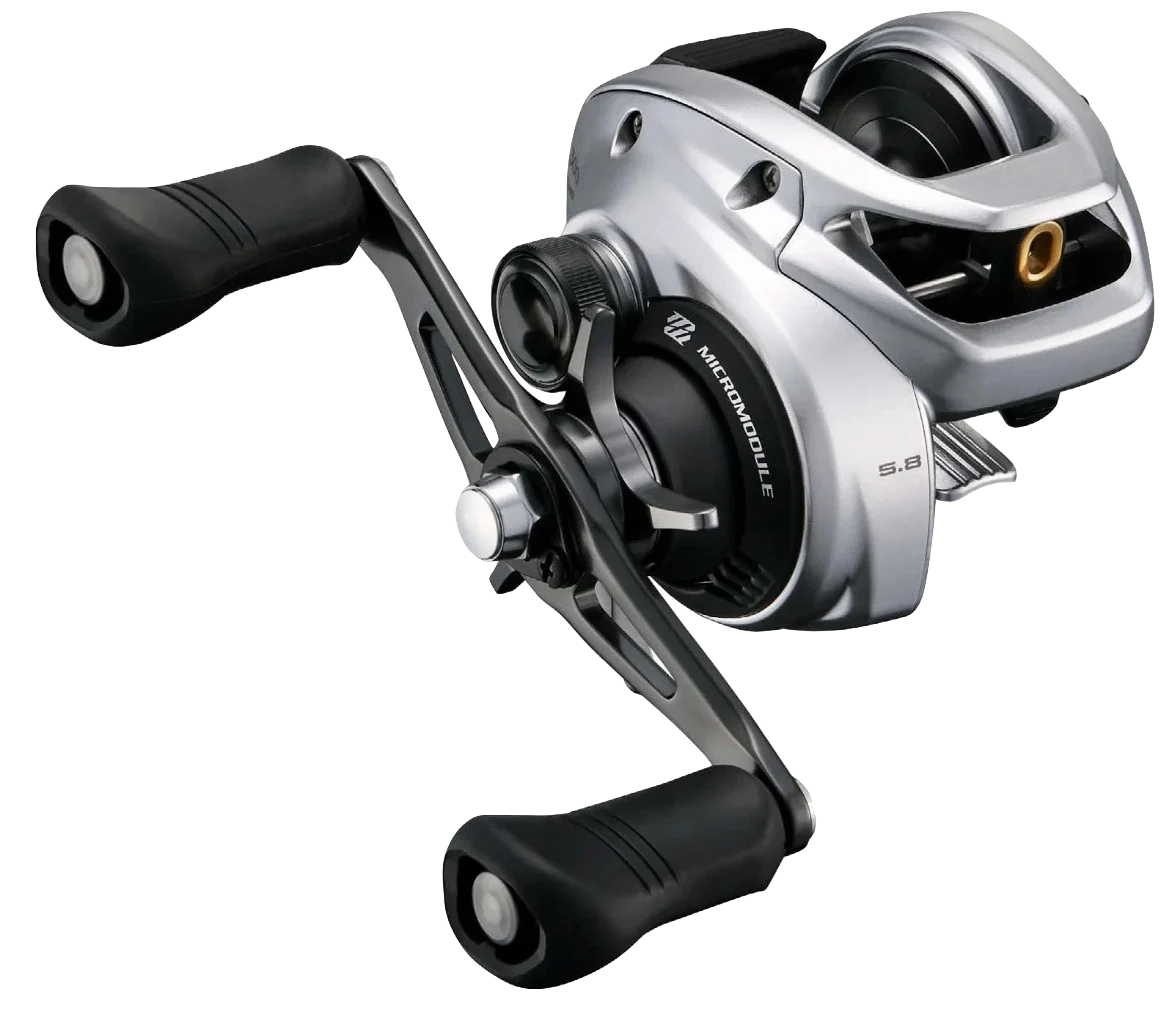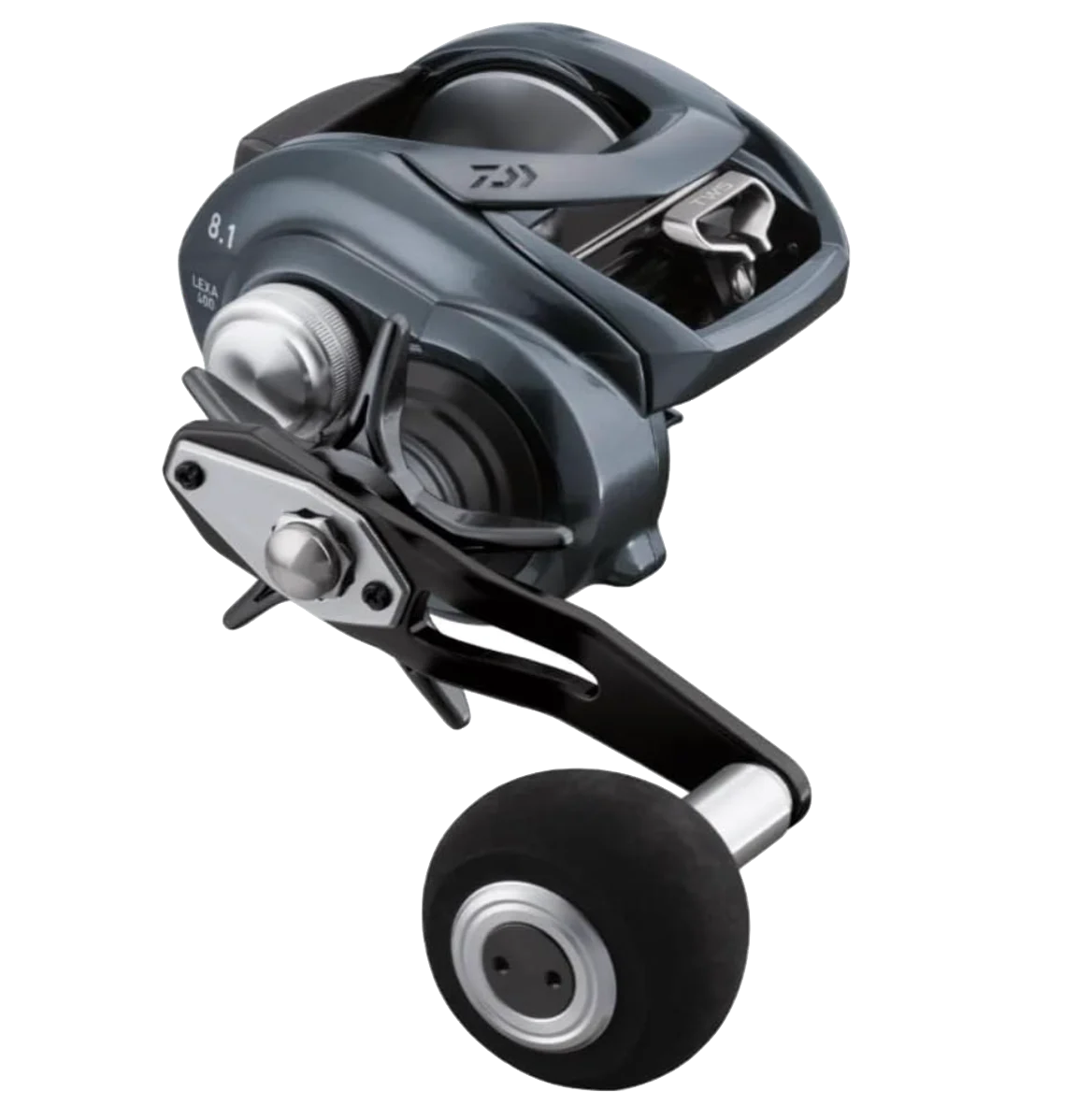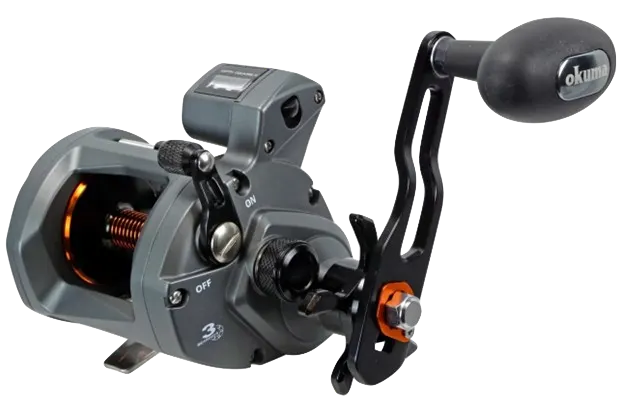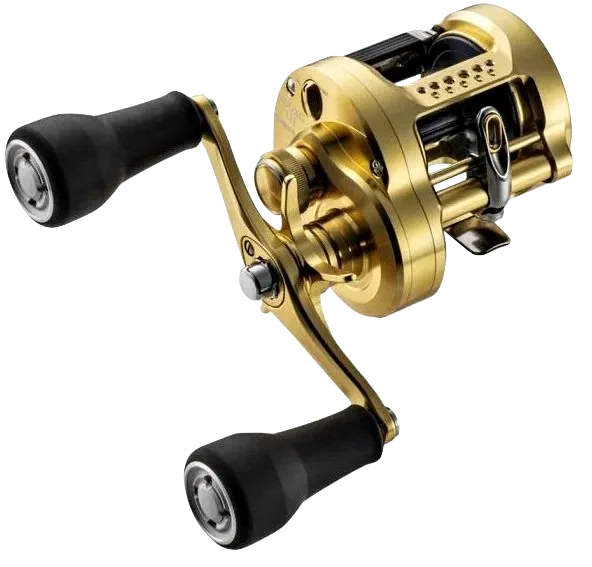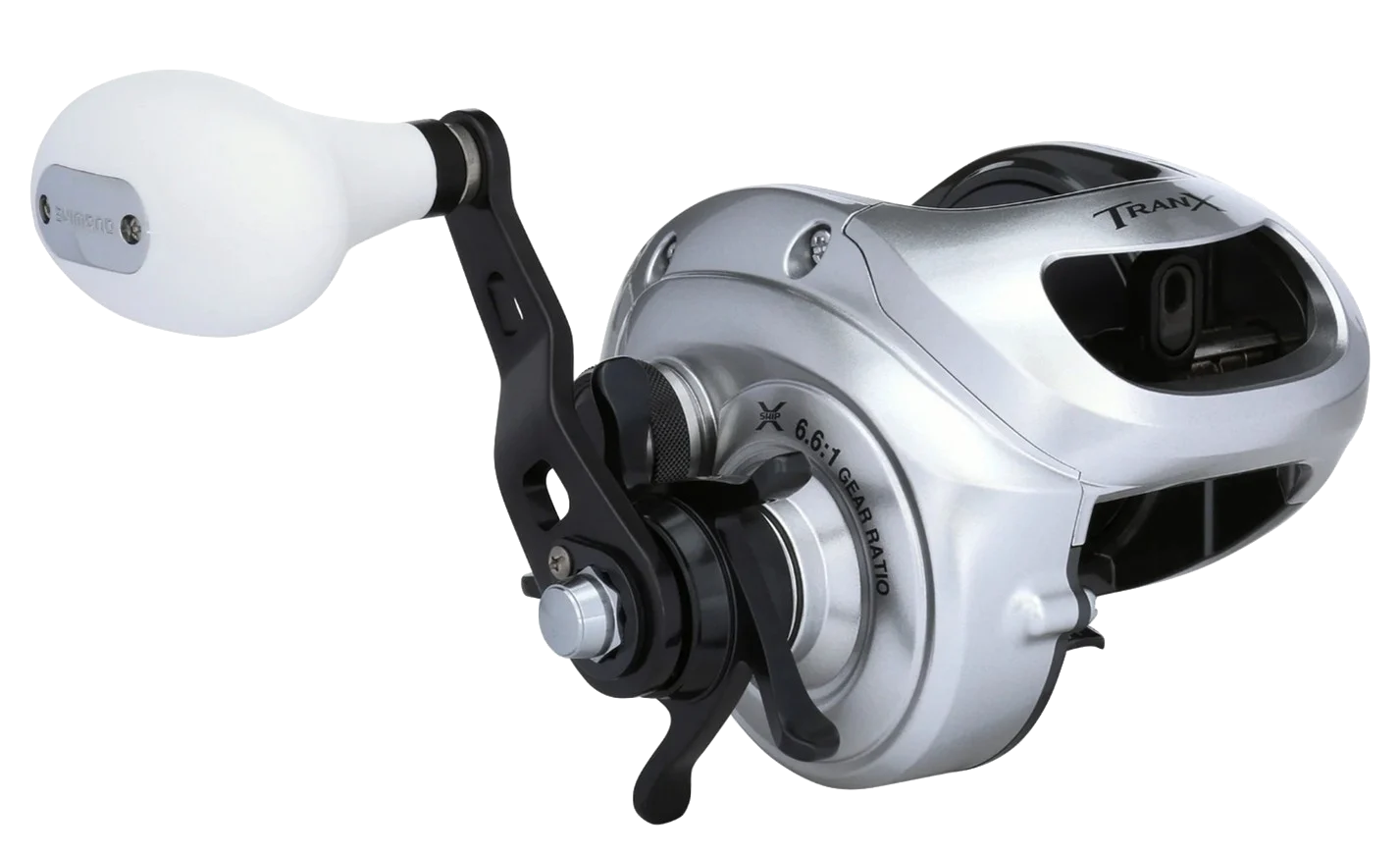We may earn revenue from the products available on this page and participate in affiliate programs. Learn more ›
Muskie fishing demands both mental grit and physical endurance. Hours of casting and retrieving—at times with lures measured in pounds, not ounces—push both anglers and gear to their absolute limits. In the relentless pursuit of freshwater’s apex predator, performance isn’t a luxury—it’s a requirement. Your reel is the engine of your setup, and in muskie fishing, it needs to be nothing short of exceptional. Here are the top muskie reels available today.
Best Overall: Okuma Komodo SS
Best for Long Casting: Daiwa Lexa TWS
Best Budget: Abu Garcia Max 4
Best Compact: Shimano Tranx 300 B
Best for Beginners: Svivlo Genesis One
Best 500-Class Reel: Daiwa Lexa 500
Best for Trolling: Okuma Cold Water Line Counter
Best Round Reel: Shimano Calcutta Conquest MD
Best High-Speed: Shimano Tranx 400 HG
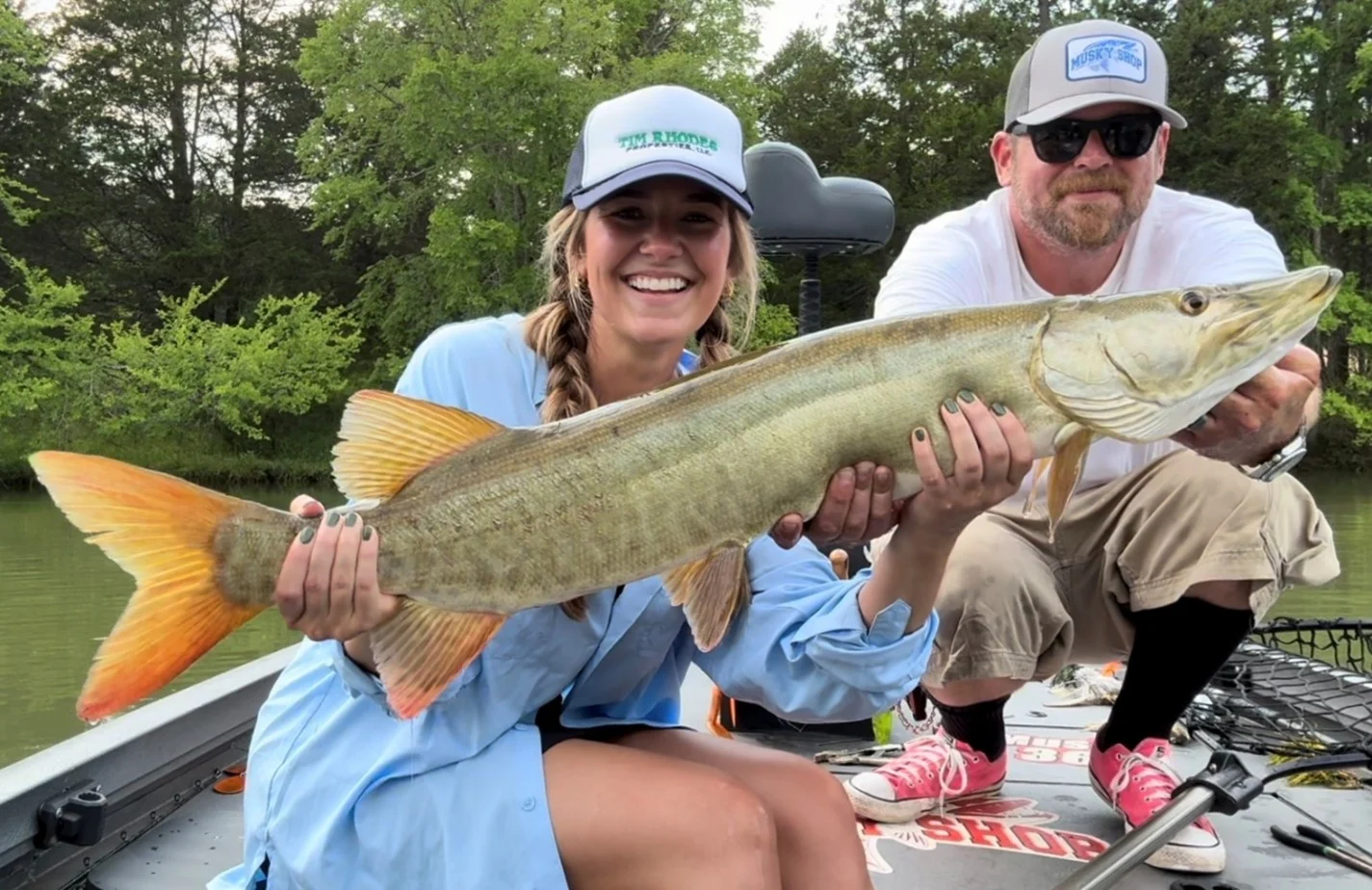
How We Picked The Best Muskie Reels
As a professional muskie guide, I was able to test each reel on this list in real-world fishing scenarios. Tests were conducted both casting and trolling for muskies during late winter and early spring of 2025. These harsh conditions exposed the reels to extreme temperature swings and weather variability. A wide range of lure types and sizes was tested with each reel. Testing continued until a muskie was hooked and landed. This allowed for a complete evaluation of each reel’s performance before, during, and after a true muskie encounter. Here are some of the criteria we used to judge the reels.
Durability: Can it handle abuse, large presentations, and harsh climates?
Line Capacity: Does it support long casts and stand up to hard runs?
Drag System: Is the drag smooth, powerful, and reliable under pressure?
Comfort: Do the ergonomics minimize hand fatigue?
Castability: Does it deliver large lures accurately and with ease?
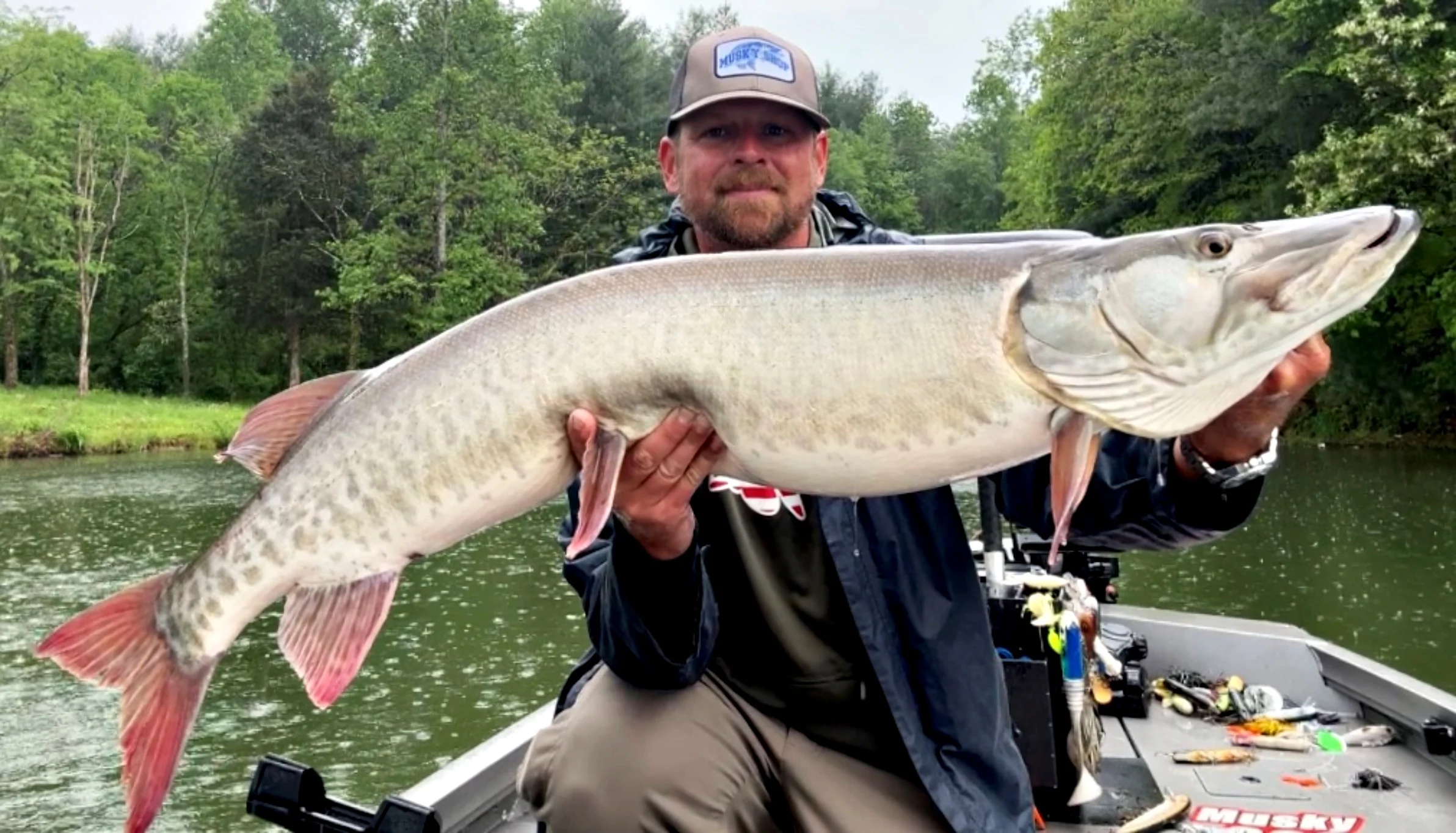
Best Overall: Okuma Komodo SS
Specs
Size: 450
Gear Ratios: 6.4:1 and 7.1:1
Max Drag: 30 lbs
Pros
Stainless steel gears
High- and low-speed models
Ergonomic design
Clicker for live bait and trolling
3-year warranty
Competitive price point
Cons
Slightly larger frame
The Okuma Komodo SS is a rock-solid choice for muskie anglers. With stainless steel gears, a smooth drag system, and corrosion-resistant internals, it's built to withstand serious abuse. Whether you're casting big rubber or working glide baits, this reel delivers consistent, precise performance season after season. For anglers looking for one reel that can handle every aspect of muskie fishing without fear of on-the-water failure, the Komodo SS is an outstanding all-around option.
Best for Long Casting: Daiwa Lexa TWS
Specs
Size: 400
Gear Ratios: 5.3:1, 6.3:1, 7.1:1, 8.1:1
Max Drag: 28.7 lbs
Pros
T-Wing casting system
Lightweight and sleek
Multiple gear ratios
Cons
Struggles in freezing temps
Higher price point
Thanks to its T-Wing system, the Daiwa Lexa TWS shines when it comes to casting distance and smooth retrieves. It's a go-to reel for throwing big blades or swimbaits, especially in warmer months, as the T-Wing system is more susceptible to icing up during late-fall and early winter due to its mechanical complexity.
Best Budget: Abu Garcia Max 4
Specs
Size: 60 (400-class equivalent)
Gear Ratio: 5.3:1
Max Drag: 26 lbs
Pros
Very affordable
Lightweight design
Bait clicker included
Cons
Not built for extreme long-term durability
The Abu Garcia Max 4 delivers solid performance at a wallet-friendly price. It may not be indestructible, but it handles big baits and powerful fish better than you'd expect for a sub-$200 reel. It is a great choice for newcomers or as a backup setup for serious anglers.
Best Compact: Shimano Tranx 300 B
Specs
Size: 300
Gear Ratios: 5.8:1 and 7.6:1
Max Drag: 18 lbs
Pros
Compact but powerful
Excellent ergonomics
Cons
Not ideal for large bucktails and rubber presentations
The Shimano Tranx 300 B is the best small-frame muskie reel in 2025. It is overbuilt for its size, boasting ample strength and durability. If you prefer a low-profile feel and mostly throw small to medium-sized baits, the 300 B offers Shimano reliability and refinement in a compact package.
Best for Beginners: Svivlo Genesis One
Specs
Size: 300-class
Gear Ratios: 6.3:1 or 8.1:1
Max Drag: 26.5 lbs
Pros
CastGuard anti-backlash system
Lightweight carbon frame
Corrosion-resistant components
Cons
Lacks a power handle option
The Svivlo Genesis One is tailor-made for beginners. With its CastGuard system preventing backlash, it allows new anglers to focus on fishing rather than fixing bird nests. It’s intuitive, smooth, and forgiving—perfect for young and older anglers who may not be experienced in casting bigger reels.
Best 500-Class Reel: Daiwa Lexa 500
Specs:
Size: 500
Gear Ratios: 5.1:1 to 8.1:1
Max Drag: 28 lbs
Pros
Powerful gearing
Robust build quality
Extended line capacity
Cons
Pricier than some comparable models
The Daiwa Lexa 500 strikes a perfect balance of power, smoothness, and line capacity. It’s designed to handle heavy baits with ease and delivers consistent drag pressure when big fish run. For anglers wanting a versatile, reliable 500-size reel, it’s the top pick of 2025.
Best for Trolling: Okuma Cold Water Line Counter
Specs
Gear Ratio: 5.1:1
Max Drag: 25 lbs
Pros
Anti-fog line counter
Durable and corrosion-resistant
Affordable
Cons
Slightly bulky
The Okuma Cold Water is a proven winner for muskie trolling. Affordable, tough, and highly accurate, it can take a beating season after season. Whether you’re long-lining cranks or running deep, this reel is a dependable choice for serious trollers.
Best Round Reel: Shimano Calcutta Conquest MD
Specs
Size: 300
Gear Ratio: 7.5:1
Max Drag: 22 lbs
Pros
Exceptionally smooth and strong
Cold-forged aluminum frame
Built to last a lifetime
Cons
Highest price point in class
The Shimano Calcutta Conquest MD is the pinnacle of round reels. It blends classic style with modern performance and engineering. The Calcutta Conquest MD is a premium choice for anglers who appreciate a traditional feel with top-end refinement.
Best High-Speed: Shimano Tranx 400 HG
Specs
Size: 400
Gear Ratio: 7.6:1
Max Drag: 22 lbs
Pros
Smooth Retrieval
Rock-solid construction
Cons
Pricey
For fast retrieves and power fishing, the Tranx 400 HG is unmatched. It pulls in over 40 inches per crank, making it ideal for aggressive presentations like double-tens or topwaters.
Shimano Tranx 500
Specs
Size: 500
Gear Ratios: 4.6:1 and 6.6:1
Max Drag: 25 lbs
Pros
Extended line capacity
Durable and smooth
Cons
Bulky frame
The Shimano Tranx 500 is a close second for the best large muskie reel. It combines brute strength and refined engineering. The Tranx 500 is a workhorse for casting giant rubber and fighting trophy fish with unmatched smoothness.
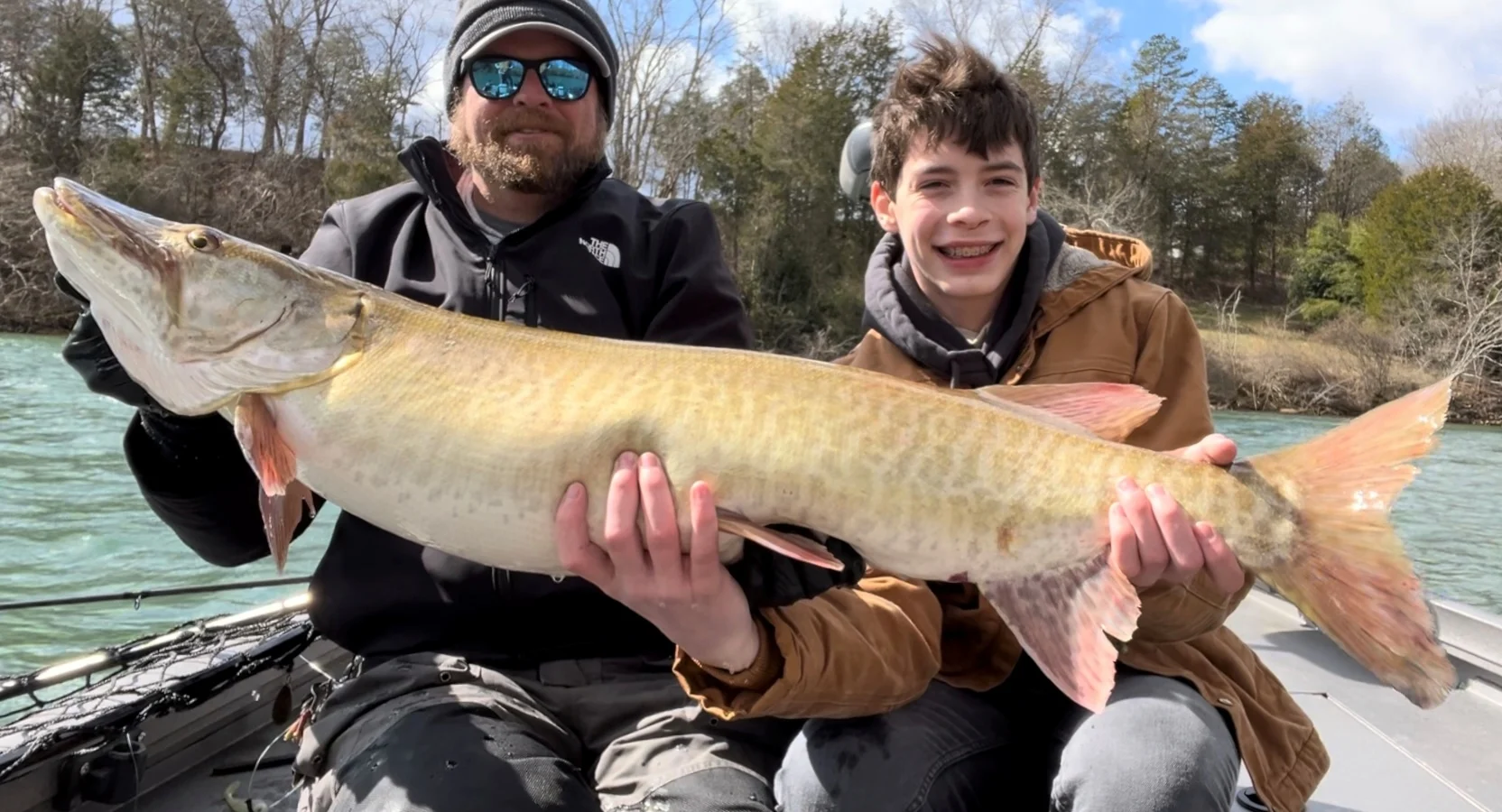
How to Choose the Right Muskie Reel
Choosing the right muskie reel depends on your fishing style, the size of the lures you use, and the environments you fish in. One often overlooked, but critical, consideration is the physical size of both the reel and the angler. To reduce fatigue, anglers with smaller hands are usually more comfortable with 300-size reels, while those with larger hands may prefer the added power and capacity of 400- or 500-size models. Below are the key factors to consider before making your purchase.
Gear Ratio
Low (5.1:1 – 5.8:1)
Great for large lures and high-resistance baits
Medium (6.3:1 – 6.6:1)
Ideal for all-around use
High (7.1:1 – 8.1:1)
Best for fast-paced presentations and quick line pickup
Max Drag
Look for a reel with at least 15 lbs of drag, especially when targeting trophy-sized fish
Line Capacity
Muskie reels must handle heavy braid (80–100 lb), but 100-plus yards is preferred for casting or trolling
Frame Material
Aluminum or Alloy for strength and durability
Graphite frames may be lighter, but they aren’t as tough under pressure
Handle Type
Power Handles give more torque when working large presentations
Double Paddle Handles offer speed and better feel for smaller baits
FAQs
Q: How important is drag when selecting a muskie reel?
Muskies are powerful but lack long-term stamina, which makes maximum drag rating less critical. Instead, prioritize smooth, consistent drag performance over high drag capacity.
Q: Can I use a spinning reel for muskie fishing?
Yes, but it’s not ideal. Most muskie presentations are designed for baitcasting reels, making spinning reels inefficient and limiting.
Q: Should I buy a 300 or 400-size muskie reel?
Reel size should be based on hand fit and comfort. Anglers with smaller hands typically benefit from 300-size reels, as they reduce fatigue and allow better control. Prioritize ergonomic fit over other features.
Q: How important is spool capacity when selecting a muskie reel?
Muskies don’t make long runs like other game fish. A spool that holds around 100 yards of 80 lb braid is more than adequate for all casting applications.
Q: Do I need a high-end muskie reel to get started?
Not necessarily. Quality matters, but you don’t need a $500 reel to catch muskies. Look for reliability, a solid drag, and a frame that feels good in hand. Mid-tier reels from trusted manufacturers often deliver excellent performance at a reasonable price.
Choosing the Right Muskie Reel
The best muskie reel is the one that fits your hand, matches your fishing style, and holds up to the brutal demands of chasing the apex predator of freshwater. Whether you're slinging larger-than-life lures at dawn, trolling deep structure, or burning double tens at sunset, the right muskie reel will give you the edge in comfort, control, and confidence. Prioritize durability, smooth drag, and ergonomics, and you’ll be well-equipped for your next big strike.
Why Trust Us
For more than 125 years, Field & Stream has been providing readers with honest and authentic coverage of outdoor gear. Our writers and editors eat, sleep, and breathe the outdoors, and that passion comes through in our product reviews. You can count on F&S to keep you up to date on the best new gear. And when we write about a product—whether it’s a bass lure or a backpack—we cover the good and the bad, so you know exactly what to expect before you decide to make a purchase.

